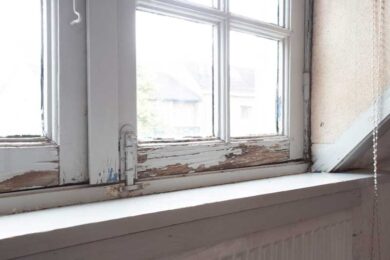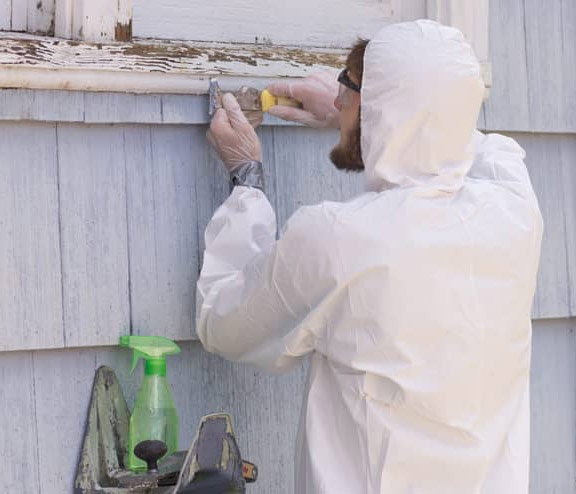Vital Tools and Techniques for Efficient Lead Offense Cleaning
Attending to lead violations successfully demands an extensive strategy that blends the right devices with critical approaches. Simultaneously, the usage of specialized cleanup devices, such as HEPA vacuum cleaners and lead-specific cleaning agents, is critical for extensive impurity elimination. Effective control approaches, consisting of plastic sheeting and unfavorable air stress systems, are essential to avoid the spread of unsafe products.
Personal Protective Equipment
Personal protective equipment (PPE) is a crucial element in the effective management of lead contamination cleanup. The important PPE for lead cleanup includes respirators, protective garments, handwear covers, and eye security.
Respirators, specifically those furnished with HEPA filters, are important for filtering air-borne lead particles, protecting against inhalation. Safety garments, including coveralls and non reusable suits, avoids lead dust from sticking to employees' garments, minimizing the risk of second contamination.
Furthermore, strenuous training on the correct use and maintenance of PPE is crucial. Workers have to be informed on wearing and doffing procedures to avoid contamination. Normal examinations and replacements of PPE parts are needed to preserve their protective capabilities, making sure a safe and certified cleaning operation.
Specialized Clean-up Tools

One more essential tool is the wet/dry vacuum cleaner, which can effectively tidy up both dirt and fluid contaminants. These vacuums commonly come with HEPA filters to offer an added layer of safety and security. Wet wipes or tack cloths are likewise critical for surface cleaning; they are particularly made to capture and hold lead particles, minimizing the danger of spreading contamination.
For more stubborn deposits, specialized lead-removal cleaner are called for. These representatives are created to damage down lead fragments, making them easier to eliminate. Scrub brushes with strong bristles can help in this process, particularly on rough surfaces where lead dust has a tendency to adhere a lot more highly.
In addition, encapsulants are used to secure lead-contaminated surface areas, preventing the release of lead dirt. These specialized paints and coatings are developed to stick to various substrates, providing a long-term solution for lead containment.
Effective Control Approaches
Efficient containment methods are essential in reducing the spread of lead contamination during cleanup tasks. Applying durable control methods guarantees that lead particles do not migrate to untouched locations, consequently safeguarding both workers and the environment. One key technique is the use of plastic sheeting to seal infected zones. Heavy-duty polyethylene obstacles can be installed from floor to ceiling to create a regulated workplace, dramatically minimizing the risk of air-borne lead dust dispersal.

To enhance control, encapsulants can be related to surface areas that are not being eliminated or disturbed. These specialized finishes bind lead dirt, decreasing its availability for resuspension. Furthermore, all personnel need to wear ideal Personal Safety Equipment (PPE), consisting of respirators and disposable matches, to avoid contamination spread.
Safe Disposal Practices
Making certain risk-free disposal techniques is a vital component in the administration of lead contamination cleanup. Appropriate disposal minimizes the danger of lead coming back the environment and threatening public wellness. The primary step is to identify and set apart lead-contaminated waste from various other materials. Protected control using heavy-duty, leak-proof containers is vital to avoid splilling during transport.
Delivering lead waste needs adherence to rigorous guidelines. Utilizing accredited unsafe waste carriers guarantees that the materials are managed responsibly. Documents, consisting of manifests detailing the kind and amount of waste, should accompany shipments to track the waste from the site of origin to its final disposal destination.
Designated hazardous waste disposal facilities are equipped to handle lead-contaminated materials securely. These centers usually use advanced approaches such as stablizing, solidification, or chemical therapy to reduce the effects of the lead before next page disposal. Landfilling in specialized, lined areas that avoid leachate from contaminating groundwater is a common practice for last disposal.
Normal training for workers included in lead waste disposal is crucial to maintain safety and security criteria and stop unintentional exposure. By sticking to these methods, organizations can considerably decrease the ecological and health and wellness impacts connected with lead contamination.
Regulatory Conformity Tips

Abiding by regulatory compliance is paramount in the effective execution of lead contamination cleaning. Comprehending and following government, state, and local guidelines makes sure not only the safety and security and health of people but additionally the legal and monetary well-being of the cleanup organization. The Epa (EPA) sets rigid standards, such as the Lead Improvement, Repair Work, and Paint (RRP) Guideline, which mandates correct certification and training for service providers dealing with lead-based tasks.
Compliance begins with a comprehensive evaluation of relevant laws and policies. Organizations needs to remain upgraded on any type of legal modifications, which can be assisted in via normal training sessions and subscribing to industry updates. Paperwork is one more vital conformity facet; keeping detailed records of all activities, including evaluation reports, employee training logs, and disposal shows up, is vital.
Additionally, engaging with certified lead examiners or risk assessors makes certain that lead hazards are correctly identified and mitigated. Companies have to apply making use of Individual Safety Devices (PPE) and make sure that security procedures are purely complied with. Clear communication with stakeholders, consisting of staff members, customers, and regulative bodies, will cultivate a society of compliance and liability, eventually contributing to a safer and extra effective lead cleanup procedure.
Final Thought
Efficient lead offense clean-up necessitates the combination of specialized tools and strategic techniques to guarantee safety and effectiveness. Utilizing HEPA vacuum cleaners, specialized cleaning representatives, and effective control methods such her response as plastic bed linen and unfavorable atmospheric pressure systems is critical. Personal safety equipment (PPE) safeguards employees from direct exposure, while safe disposal methods and strict adherence to regulative conformity are vital for responsibly handling contaminated materials. Collectively, these procedures significantly alleviate wellness risks and add to a cleaner setting.